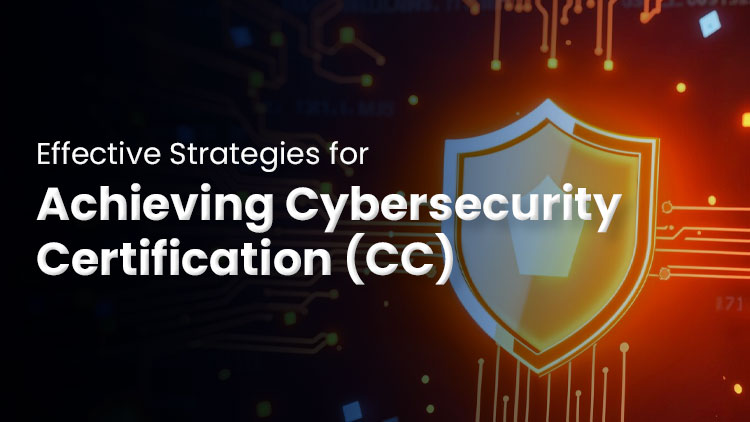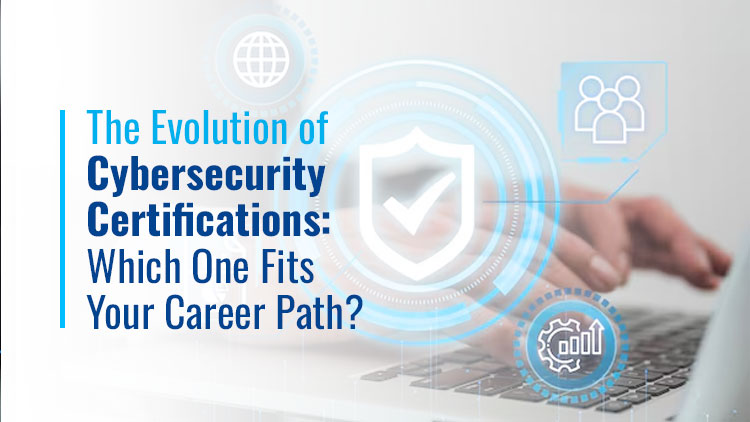
Effective Strategies for Achieving Cybersecurity Certification (CC)

Introduction
In today’s digital world, where data breaches and cyber threats are an ever-present concern, the demand for skilled cybersecurity professionals has never been higher. Earning a Cybersecurity Certification (CC) not only validates your expertise in protecting sensitive information but also positions you as a top candidate in the rapidly growing field of cybersecurity. However, like any certification, passing a cybersecurity exam requires careful preparation and a solid strategy.
In this blog, we’ll dive into proven strategies for conquering your cybersecurity certification, helping you optimize your study routine, choose the right resources, and gain the confidence needed to succeed.
Achieving a cybersecurity certification is a crucial step toward advancing in one of the fastest-growing IT fields. At VERSAtile Reads, we provide expert-designed Exam Cram Notes and practice questions tailored to help you conquer your cybersecurity certification exams. Our resources will equip you with the knowledge and confidence to succeed. Visit VERSAtile Reads now to explore our cybersecurity course offerings and take the first step toward exam success!
What is Cybersecurity Certification (CC)?
Cybersecurity certifications validate an individual’s knowledge, skills, and expertise in protecting systems, networks, and data from cyber threats. These certifications cover various domains of cybersecurity, such as network security, risk management, cryptography, incident response, and more. They are designed to ensure that cybersecurity professionals possess the necessary competencies to detect, prevent, and respond to cyberattacks. Depending on the level and type of certification, they cater to entry-level professionals, experienced security practitioners, and specialized experts in certain areas of cybersecurity.
Here are some widely recognized cybersecurity certifications along with their key domains:
-
Certified Information Systems Security Professional (CISSP)
The CISSP is one of the most recognized cybersecurity certifications globally. It focuses on designing, implementing, and managing a cybersecurity program.
CISSP Domains:
- Security and Risk Management: This covers the foundational concepts of information security, confidentiality, integrity, and availability, along with risk management strategies.
- Asset Security: Deals with protecting data, maintaining data integrity, and ensuring privacy.
- Security Architecture and Engineering: Involves securing information systems, applying secure design principles, and understanding the security of cryptographic methods.
- Communication and Network Security: Covers network architecture, data communication channels, and security controls for network components.
- Identity and Access Management (IAM): Deals with managing identity lifecycle, authentication, and authorization controls.
- Security Assessment and Testing: Focuses on auditing, assessment techniques, and testing strategies to find vulnerabilities.
- Security Operations: Covers incident management, monitoring, disaster recovery, and operational security practices.
- Software Development Security: Focuses on integrating security into software development, preventing vulnerabilities like buffer overflows and SQL injections.
-
Certified Ethical Hacker (CEH)
CEH focuses on offensive security. It trains professionals to think and act like hackers to identify system vulnerabilities.
CEH Domains:
- Footprinting and Reconnaissance: Methods to gather information about a target before launching an attack.
- Scanning Networks: Identifying vulnerabilities in network architecture using various tools and techniques.
- Enumeration: Gathering detailed information about network resources and services.
- System Hacking: Techniques for compromising systems and obtaining unauthorized access.
- Trojans, Viruses, and Worms: Understanding malware and methods for exploiting systems.
- Social Engineering: Exploiting human psychology to gain access to systems.
- Web Application Hacking: Exploiting web vulnerabilities like SQL injection and cross-site scripting (XSS).
- Wireless Network Hacking: Attacking Wi-Fi networks, encryption bypass, and hijacking.
- Cryptography: Basic cryptographic techniques, including encryption algorithms and breaking weak encryption.
-
CompTIA Security+
Security+ is an entry-level certification that covers the essential aspects of cybersecurity.
Security+ Domains:
- Threats, Attacks, and Vulnerabilities: Covers common attack vectors, social engineering, malware, and advanced persistent threats.
- Technologies and Tools: Tools for network security, firewalls, VPNs, and intrusion detection systems (IDS).
- Architecture and Design: Security frameworks, secure network architecture, and implementing layered security.
- Identity and Access Management: Methods for controlling access to resources, authentication, and identity federation.
- Risk Management: Principles of risk identification, management strategies, and compliance with legal and regulatory requirements.
- Cryptography and PKI (Public Key Infrastructure): Basics of encryption, hashing, and digital signatures.
-
Certified Information Security Manager (CISM)
CISM focuses on managing and governing enterprise-level security.
CISM Domains:
- Information Security Governance: Establishing and maintaining an information security strategy that aligns with organizational goals.
- Information Risk Management: Identifying, assessing, and managing risks to minimize the impact of security threats.
- Information Security Program Development: Developing, implementing, and maintaining security programs to meet organizational objectives.
- Information Security Incident Management: Managing the response to security incidents and implementing strategies to prevent future attacks.
-
Certified Information Systems Auditor (CISA)
CISA is focused on auditing, control, and assurance, ensuring that an organization’s information systems are secure and compliant.
CISA Domains:
- Information Systems Auditing Process: Planning, conducting, and reporting on IT audits.
- Governance and Management of IT: IT governance frameworks, strategies, and organizational management.
- Information Systems Acquisition, Development, and Implementation: Reviewing and auditing the acquisition and development of systems.
- Information Systems Operations and Business Resilience: Ensuring operational integrity, data backup, and recovery mechanisms.
- Protection of Information Assets: Data privacy, protection mechanisms, and incident response.
-
Certified Cloud Security Professional (CCSP)
CCSP focuses on cloud security architecture, operations, and compliance, validating expertise in securing cloud environments.
CCSP Domains:
- Cloud Concepts, Architecture, and Design: Cloud models, architecture, and secure design.
- Cloud Data Security: Data lifecycle, encryption, and privacy.
- Cloud Platform and Infrastructure Security: Securing cloud infrastructure and virtualization.
- Cloud Application Security: Secure software development, API security, and DevSecOps.
- Cloud Security Operations: Monitoring, logging, and incident response in the cloud.
- Legal, Risk, and Compliance: Cloud governance, risk management, and regulatory compliance.
Proven Strategies for Success
-
Understand Certification Requirements and Exam Objectives
Research your chosen certification (e.g., CEH, CISSP, or CompTIA Security+), review exam objectives, and familiarize yourself with the exam format.
Action Steps:
- Download exam objectives from the official certification site
- Break down exam domains into manageable sections
- Review the format, time limit, and question types
-
Build a Study Plan Around Your Strengths and Weaknesses
Assess your knowledge and focus on areas where you need improvement. Tailor your study plan to balance weaker areas with a regular review of stronger topics.
Action Steps:
- Conduct a self-assessment
- Allocate more time to weaker areas
- Create a weekly study schedule
-
Use a Variety of Study Materials
Diverse resources—such as study guides, online courses, practice exams, and hands-on labs—enhance understanding and practical skills.
Action Steps:
- Start with an official study guide
- Use online courses for deeper explanations
- Regularly take practice tests and use hands-on labs
-
Focus on Active Learning
Engage with the material using active learning techniques, like summarizing concepts, teaching others, and applying knowledge in real-world scenarios.
Action Steps:
- Use the teach-back method to reinforce understanding
- Summarize material from memory after study sessions
- Apply concepts in virtual networks or real-world setups
-
Join a Study Group or Online Community
Collaborating with peers helps you stay motivated, clarify difficult concepts, and access additional resources.
Action Steps:
- Join study groups or online forums (e.g., Reddit, TechExams)
- Participate in discussions and share insights
- Consider a boot camp for structured guidance
-
Stay Consistent and Review Regularly
Stick to a regular study schedule, review past topics periodically, and balance intense study with breaks.
Action Steps:
- Follow a daily/weekly study plan
- Schedule regular review sessions
- Take breaks to recharge
-
Prepare for Exam Day
In the final week, focus on full-length practice exams and reviewing weaker areas. Rest well the day before the exam to ensure peak performance.
Action Steps:
- Take timed practice exams
- Prioritize reviewing weak areas
- Rest and mentally prepare the day before the exam
Conclusion
Achieving a cybersecurity certification is a challenging but rewarding process that requires a blend of theoretical knowledge, practical skills, and strategic preparation. By following these proven strategies—understanding the exam, creating a study plan, using diverse resources, and focusing on hands-on practice—you’ll be well-equipped to pass your exam and take the next step in your cybersecurity career.
Your journey to becoming a certified cybersecurity professional starts now! Stay disciplined and curious; soon, you’ll be ready to defend the digital world against threats. Good luck!
FAQs
-
What is the best cybersecurity certification for beginners?
For beginners, CompTIA Security+ is an excellent choice. It covers foundational concepts in cybersecurity, such as threats, vulnerabilities, risk management, and cryptography. It is widely recognized and serves as a solid entry point for individuals new to the field.
-
How long does it take to prepare for a cybersecurity certification exam?
The preparation time can vary depending on the certification and your prior experience. For example, CISSP might require several months of study for experienced professionals, while Security+ could take 2 to 3 months of focused study. A tailored study plan based on your strengths and weaknesses will help optimize your preparation time.
-
Are practice exams necessary for passing cybersecurity certification exams?
Yes, practice exams are highly recommended. They help familiarize you with the exam format, identify areas where you need improvement, and build confidence for the actual test. Incorporating regular practice exams into your study routine is a proven strategy for success.
- Published Date:



